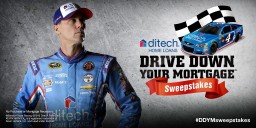If ever there were brands built on the backs of traditional media, it would be Budweiser and Bud Light. These stalwarts of sports broadcasts, joined us in our living rooms and bars, reminding us years back who this Bud was for and more recently, inciting us to be up for whatever with Bud Light. But just because TV was the big horse they rode in on doesn’t mean that Anheuser Busch isn’t making tracks on the digital frontier. In fact, Lucas Herscovici, VP of Consumer Connections at Anheuser-Busch, reports that A-B’s investment in digital is growing rapidly and with good results. Here’s our interview on that and more after Herscovici received the CMO Officer award from the The CMO Club.
Drew: Looking back over the last 12-24 months, what initiative under your leadership really worked well? What were some of the challenges you had to overcome? What were the results?
I’m proud about the work we’ve done to make Anheuser-Busch one of the top CPG companies in digital. In order to do that, we had to shift the way the organization looked at marketing, increase investments and ultimately prove that it helps drive sales. I’m happy to say that it resulted in success. Bud Light and Budweiser are now recognized as CPG leaders in digital by external parties and platforms like Tinder and Snapchat are choosing our brands to be the first brands to advertise on their platforms.
Drew: Effecting change beyond the marketing department is not easy and is often met with resistance from other departments. How did you make this happen? Looking back, what do you wish you knew a year ago that you learned “the hard way”?
Changing the way we negotiate sports team sponsorships initially met with some resistance due to some historical partnerships between the company and teams. By delivering a few quick wins and demonstrating results, other departments got on board with the strategy. One “key learning” was that we need to involve all the stakeholders early. When everyone is part of the process from the start, it is easier for them to get behind a new way of doing things.
Drew: Did any of your marketing initiatives involve employee activation? If so, can you describe what you did and how it worked? How did you get employees to care?
At Anheuser-Busch, one of our core beliefs is that everyone should act like an owner. We created the rock star of the month award within our new media agency team to extend that sense of pride to not only our employees but to our marketing partners. The award recognizes great contributors and ultimately drove high engagement within the extended team.
Drew: When advising members of your team on cross-departmental initiatives, what do tell them to do and not do to ensure success?
We’re in the business of bringing people together, and that holds true within our marketing team. I encourage all of our employees to go to the field, meet with people face to face to understand how things work and come with solutions in a collaborative way.
Drew: What is the single biggest challenge that you’d like to overcome?
While we’re pleased with our success in digital marketing for Budweiser and Bud Light, there is still room to improve on how we connect with our consumers. For 2016, we’ll be focused on strengthening all of our brands by further enhancing the way we connect with consumers and shaping the culture for each brand.




